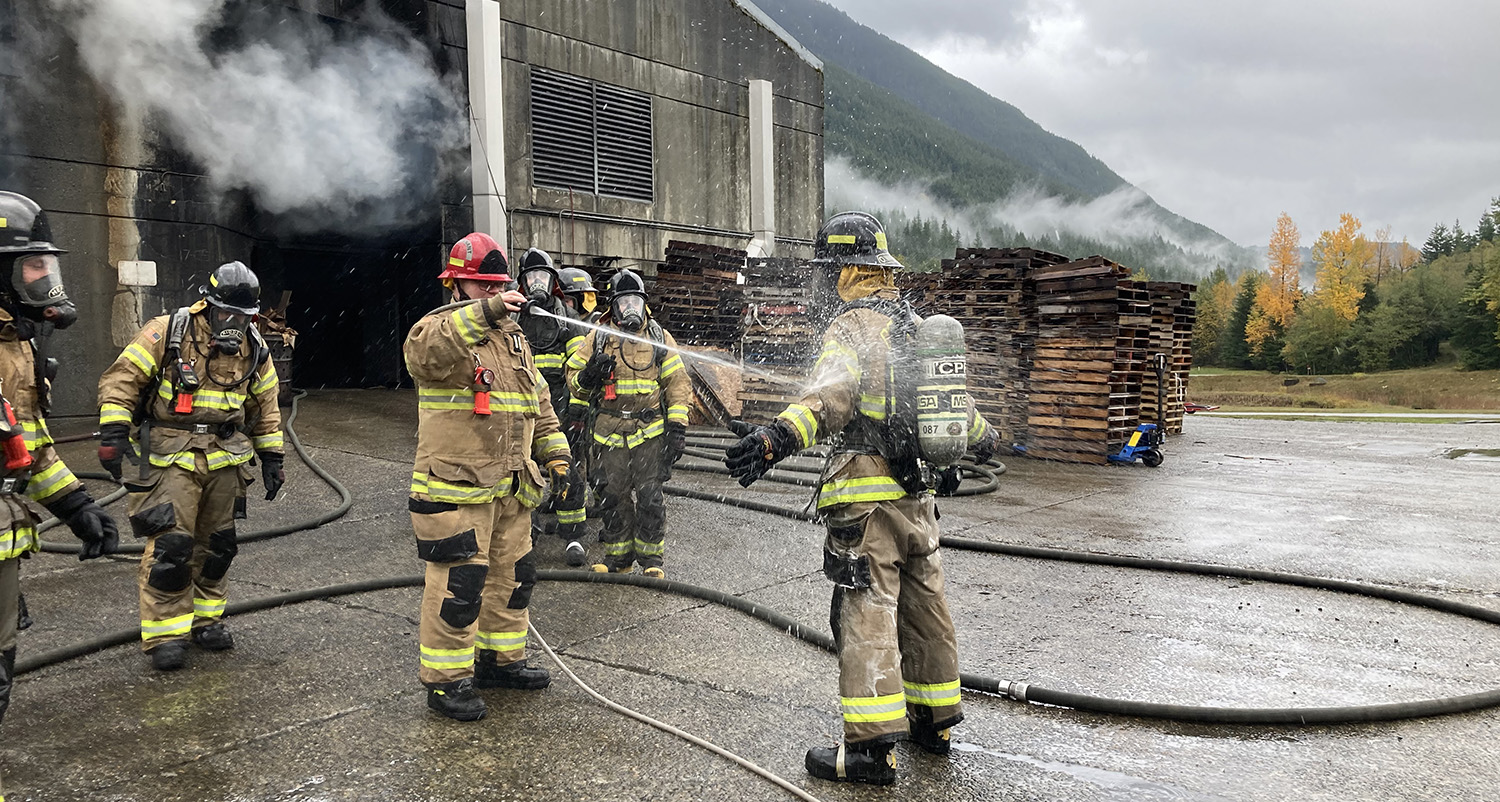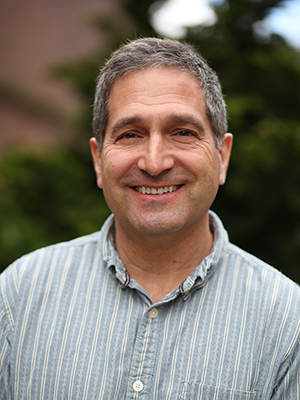Firefighters risk their lives responding to emergencies, but they also jeopardize their long-term health through exposure to toxic chemicals and other occupational hazards. As a result, firefighters are at increased risk for cancer, cardiovascular disease and other health conditions.
To investigate the health hazards of firefighting and find ways to reduce exposures, Elena Austin, an assistant professor in the UW Department of Environmental & Occupational Health Sciences (DEOHS), and her colleagues are pursuing three research studies involving both career and volunteer firefighters.
“There’s a slowly emerging awareness that there's an increased health burden, particularly of cancers, on firefighters,” Austin said. All three projects emerged “through discussions with firefighting partners, and trying to understand what their needs are,” she said.
A triad of firefighter health projects
Austin leads the Washington state portion of a national study on cancer risks in volunteer firefighters, an understudied population. The project is funded by the Federal Emergency Management Agency and led by researchers at Rutgers University.
Austin and DEOHS Teaching Professor Martin Cohen are also leading another study on firefighters’ dermal exposure to toxic chemicals called polycyclic aromatic hydrocarbons (PAHs) with funding from the Washington State Department of Labor & Industries.
Finally, Austin and recent DEOHS MS graduate McKay Reed have examined the impact of radiofrequency exposures on career firefighters with funding from the International Association of Firefighters (IAFF).

Cancer risk in volunteer firefighters

Occupational exposure during firefighting was recently declared to be a group 1 carcinogen, meaning there is sufficient evidence that it causes cancer in humans, according to a 2022 report by the International Agency for Research on Cancer.
Researchers determined this association mainly through research on career firefighters. But of the 1.1 million firefighters in the US, the vast majority are volunteers: they make up 67% of firefighters in the US and 84% of those in Washington state.
Volunteer firefighters’ exposures may vary from those of career firefighters given their different levels of training and access to protective equipment, time responding to emergencies, exposures in their careers outside of firefighting, lifestyles and other factors.
To fill this research gap, Austin is collaborating with Rutgers Associate Professor Judith Graber, who is leading a seven-site longitudinal study of volunteer firefighters’ environmental exposures called the Firefighter Cancer Assessment and Prevention Study. As a coinvestigator, Austin is recruiting and working with a cohort of volunteer firefighters in Washington state.
Tracking carcinogenic chemical exposures
Firefighters are exposed to a host of carcinogens in the line of duty, including asbestos, benzene, flame retardants, formaldehyde, polychlorinated biphenyls, PAHs, and per- and polyfluoroalkyl chemicals (collectively known as PFAS).
The researchers are particularly concerned about exposure to PFAS because of their persistence in the environment, high toxicity at low concentrations and prevalence in consumer products, water and legacy firefighting foams. The teams will collect blood and urine samples from study volunteers to determine their baseline exposure to PFAS and compare these values to those of career firefighters.
“The real goal is to develop guidance and practical solutions that could effectively reduce exposures,” Austin said.
What gloves protect firefighters best during cleanup?

Firefighters breathe in toxic chemicals while fighting a fire, but they can also be exposed to them through the skin.
After a fire is quenched, firefighters do cleanup activities including rolling and stowing hoses and equipment. Currently, there is limited guidance on best practices related to glove use during these activities. In a project funded by the State of Washington Safety & Health Investment Projects grant program, Austin, Cohen and their team are testing whether the type of gloves firefighters wear during cleanup make a difference in their exposure to PAHs.
Structural gloves used for firefighting may be more protective against these toxic chemicals produced during combustion, but more permeable leather gloves offer greater dexterity and comfort.
To study this, they are working with recruits and trainers from Central Pierce Fire & Rescue during live fire training activities at the Washington State Fire Training Academy in North Bend, Washington. DEOHS MS student Asheton Gilbertson is a member of the research team.
“It's not exactly like a live fire,” Austin said. “But it’s also more reproducible because they do certain types of burns, so we have a better sense of the type of exposure that they may have.”
Radiofrequency exposure in career firefighters
Last year, Austin and Reed conducted a study on exposure to radiofrequency waves in career firefighters, prompted by concerns raised by firefighters through the IAFF.
Communication devices that firefighters use for emergency response transmit these waves. Additionally, many cities lease space for radio communication towers on fire station properties.
Their pilot project tracked variability in radiofrequency exposures inside and outside fire stations in the Puget Sound area. They also surveyed about 150 firefighters to investigate whether radiofrequency exposure contributed to sleep disruption.
“We did see some variability in exposure, but the scale of that exposure is not particularly high compared to recommended guidelines,” Austin said.
Although the team didn’t find an association between sleep disruption and radiofrequency exposure, Austin noted that they found high levels of sleep disruption in general among the firefighters.
“The scale of that disruption is related to how many nights on shift they've been working,” she said.




